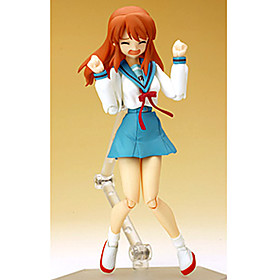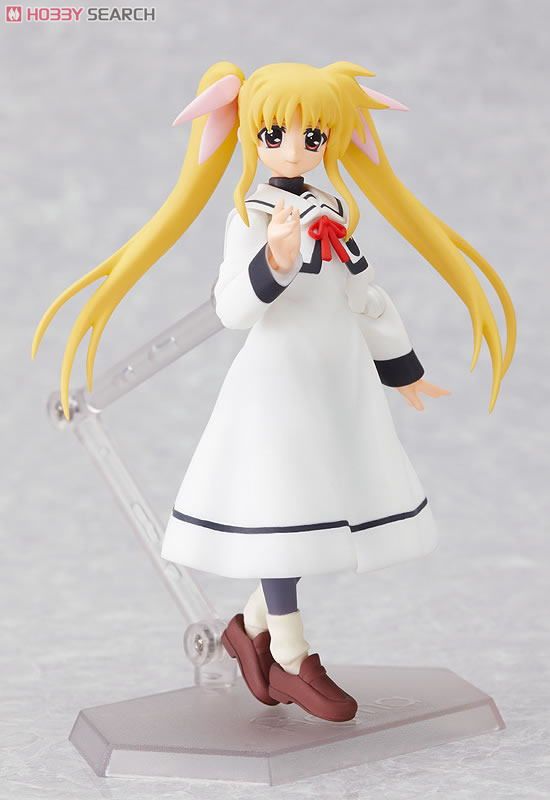Shimaseek!;)
THIS BLOG IS SPECIALLY MADE FOR OTAKU MANGANIME!
(=_=;)
どうして君を好きになってしまったんだろう?;)
Tau tak apa maksud benda alah ni?why did i fall in love with you laaaaaaaaa hahhaha nak bagi kat boyfriend la tu hahah bagi la kak oii
Doushite-Tohoshinki
Thursday, July 22, 2010
Akihabara Otaku Paradise
A Youtube Video, entitled Akihabara Otaku Paradise: a Feint Operation starts with a speech given by an otaku that is a diehard fan of anime and manga, in which he talks about anime and being an otaku: “That animated cartoons and figures is a hobby that Japan boasts to the world. We want to tell people all over the Japan with this in confidence. This is our mission. We are proud to be otaku. It is proud to be otaku. Yes. It is not a shame to be otaku. It is proud to be otaku.” Then they shout together: “The otaku spirit is we are immortal.” In the video, we also see manga and anime otakus dancing in costumes to j-pop, Japanese pop songs, in Akihabara, a neighborhood known as the center of anime and manga culture in Tokyo, and making cosplay, acting out the anime figures by dancing in their costumes.
Manga and anime (hereafter I will call it “manganime”) culture has spread throughout the world as one of the most famous element of Japanese popular youth culture. Manganime culture has become a very strong (sub) culture on the internet with its fans (otakus), and is lived as reality. Japanese animation and comics have built a global following and have entered the international lexicon with their Japanese names: manga and anime. Young Americans, Europeans and Asians have grown up watching Japanese cartoons, among many Astro Boy (Noboru Ishiguro Osamu Tezuka, 1980), Captain Tsubasa (Yôichi Takahashi, 1994), Heidi (Atsuji Hayakawa, Masao Kuroda, 1974), Sailor Moon (Junichi Sato, 1995 and Naruto (Hayato Date, Jeff Nimoy, 2002). Anime fan clubs, “fanzines”, and websites have sprung up by the hundreds, and hit movies such as Spirited Away (Hayao Miyazaki,2001) , Akira (Katsuhiro Ôtomo, 1988), and Ghost in the Shell (1995- 2004) have been seen by thousands of people. Japanese manga is translated and read eagerly throughout the world, and some European animators have been inspired by the aesthetics of manga and anime.
Monday, July 19, 2010
KIMI NI TODOKE-From Me To You;)
Haruma Mira as Shouta Kazehaya
Mikako Tabe as Sawako "Sadako" Kuronuma
Sunday, July 18, 2010
history of OTAKU;)
In modern Japanese slang, the term otaku refers to a fan of any particular theme, topic, or hobby. Common uses are anime otaku (a fan of anime), cosplay otaku and manga otaku (a fan of Japanese comic books), pasokon otaku (personal computer geeks), gēmu otaku (playing video games), and wota (pronounced 'ota', previously referred to as "idol otaku") that are extreme fans of idols, heavily promoted singing girls. There are also tetsudō otaku or denshamania (railfans) or gunji otaku (military geeks).
While these are the most common uses, the word can be applied to anything (music otaku, martial arts otaku, cooking otaku, etc).
The loan-words maniakku or mania (from the English "maniac" and "mania") are sometimes used in relation to specialist hobbies and interests. They can indicate someone with otaku leanings. For example, Gundam Mania would describe a person who is very interested in the anime series Gundam). They can also describe the focus of such interests (a maniakku gēmu would be a particularly underground or eccentric game appealing primarily to otaku). The nuance of maniakku in Japanese is softer and less likely to cause offense than otaku.
Some of Japan's otaku use the term to describe themselves and their friends semi-humorously, accepting their position as fans, and some even use the term proudly, attempting to reclaim it from its negative connotations. In general colloquial usage however, most Japanese would consider it undesirable to be described in a serious fashion as "otaku"; many even consider it to be a genuine insult.
An interesting modern look into the otaku culture has surfaced with an allegedly true story surfacing on the largest internet bulletin board 2channel: "Densha Otoko" or "Train Man", a love story about a geek and a beautiful woman who meet on a train. The story has enjoyed a compilation in novel form, several comic book adaptations, a movie released in June 2005, a theme song Love Parade for this movie by a popular Japanese band named Orange Range and a television series that aired on Fuji TV from June to September 2005. The drama has become another hot topic in Japan, and the novel, film and television series give a closer look into the otaku culture. In Japan its popularity and positive portrayal of the main character has helped to reduce negative stereotypes about otaku, and increase the acceptability of some otaku hobbies.
The former Prime Minister of Japan, Taro Aso also claimed himself to be an otaku, using this subculture to promote Japan in foreign affairs.
The Akihabara neighborhood of Tokyo is a popular gathering site for otaku.
A subset of otaku are the Akiba-kei, men who spend a lot of time in Akihabara in Tokyo and who are mainly obsessive about anime, idols and games. Sometimes the term is used to describe something pertaining to the subculture that surrounds anime, idols and games in Japan. This subculture places an emphasis on certain services (see fanservice) and has its own system for judgment of anime, dating simulations and/or role-playing games and some manga (often dōjinshi) based upon the level of fanservice in the work. Another popular criterion — how ideal the female protagonist of the show is — is often characterized by a level of stylized cuteness and child-like behavior (see moe). In addition, this subculture places great emphasis on knowledge of individual key animators and directors and of minute details within works. The international subculture is influenced by the Japanese one, but differs in many areas often based upon region. (See also: Superflat, Hiroki Azuma.)
On the matter, in recent years "idol otaku" are naming themselves simply as Wota (ヲタ) as a way to differentiate from traditional otaku. The word was derived by dropping the last mora, leaving ota (オタ) and then replacing o (オ) with the identically sounding character wo (ヲ), leaving the pronunciation unchanged.[4]
In Japan, anime is not as widely accepted and mainstream as manga. Because of this the otaku subculture has much influence over the mainstream anime industry in Japan. The area where otaku have the most influence in manga tends to be with dōjinshi. Manga published in the United States are more influenced by their respective otaku subculture than they are in Japan. This is because most people who read manga have some ties to the subculture in the US, whereas in Japan manga reading is more widespread.[citation needed]
When otaku are studied, female otaku are largely ignored.Reki-jo are female otaku interested in Japanese history.
[edit] In English
BISHOUJO! (ANIME GIRL'S FIGURES/DOLLS)
Bishōjo (美少女), literally, "beautiful young girl", also spelled bishoujo) is a Japanese term used to refer to young and pretty girls, usually below university age. Bishōjo is not listed as a word in the prominent Japanese dictionary Kōjien. A variant named biyōjo (美幼女) refers to a girl before the age of adolescence.
Bishōjo characters are seen in almost all genres of anime and manga, especially in dating sims and visual novels, known as bishōjo games, and so-called harem anime and manga. It is distinguished from the similar sounding shōjo demographic by referring to the gender and traits of the characters rather than that of the audience. Although bishōjo is not a genre but a character design, series predominantly featuring such characters such as "harem" or visual novels are sometimes informally called "bishōjo series". Since one of the main draws of these series are typically the art and the attractive female characters, the term is occasionally perceived negatively as a "genre" solely depending on its marketability of cute characters rather than its content or plot.
P/S: hahaaa, cun tak?
kan bila dlm komik watak2 dorg ni cm cun gila kan?
hahah cuba korang bayang klau benda ni jadi anak patung?hahhaha gila aah kan?klau kau nak harapkan wujud mmg tak dpat aah hahah figura pun okay apa aah gila aah aku nak gunakan semua duit scholar aku beli figura aahhh ahhahahahahha;)
Gashapon (ガシャポン)! (CAPSULE TOYS)
Gashapon (ガシャポン) or gachapon (ガチャポン), also referred to as "capsule toy", is a Japanese onomatopoeia, made up of two sounds: "gacha" for the turning of a crank on a toy vending machine, and "pon" for the sound of the toy capsule dropping into the receptacle. It is used to describe both the machines themselves, and any toy obtained from them.
Gashapon machines are similar to the coin-operated toy vending machines seen outside of grocery stores and other retailers in other countries. While American coin-operated vending toys are usually cheap, low-quality products, sold for a quarter, 50, or sometimes 75 cents[dubious – discuss], Japanese gashapon can cost anywhere from 100–500 yen (approx. $5) and are normally a much higher quality product. They are often constructed from high-grade PVC plastic, and contain more molding detail and carefully painted features. Many gashapon are considered collector's items, with rare ones fetching extremely high prices.
Gashapon toys are often based on popular character licenses from Japanese manga, video games, anime, popular icons and a few American entertainment licenses. These highly detailed toys have found a large following among adults in Japan, and the trend is filtering to the West with other popular culture influences such as anime and manga. It is not at all uncommon to see sets based on licenses explicitly for adults, with figures of naked or near-naked women, which costs a little more than other capsules.
Virtually all gashapon are released in sets - each series will have a number of figures to collect. They are, by nature, a "blind purchase"; people insert coins and hope to get the toy or figure they desire. It may become frustrating, as one risks obtaining the same capsule repeatedly.
Most collectors will buy sets from gashapon stores in places such as Tokyo's Akihabara or Osaka's Nipponbashi (Den Den Town). Depending on the store, the sets are usually cheaper than buying them randomly out of a machine.
FUHHH! Bila korang tension ke hape cuba try main and beli benda alah ni mesti korang rase takde awek ke bf pun tak pee hahh lagi2 klau dpt figura yg hensem gila aahhhh(terhuyung hayang hahahah)
Thursday, July 15, 2010
SHUKATSUU!KIMI NI NAITE by Yoshino Aki


Life isn’t sweet… Asaoka Yuuri, a senior in university, has failed for the 49th time in job hunting. During an exam at the 50th company, which should be a commemoration for her, she came to know Manabe Ryouji, a famous guy at her university. The first impression was horrible. But what will happen to Yuuri, who started to be attracted to Manabe, who looks cool and can do everything to the point that it’s annoying…?!
p/s:seriously buku ni best gila hahahha dlm beratus2 komik yang aku ada, bagi aku buku ni yang bagi aku semangat dan inspirasi untuk aku hidup;)
thanks a lot Yoshino Aki
Wednesday, July 14, 2010
Manga is my life;)
hahhahaha buat kedua kalinya aku buat blog ni hahah walaupun aku taktau sesiapa yang baca tapi atleast aku buat jugak la nak share apa yang aku tahu pasal manganime ni hahahha gila ke asyik gelak hahahahha;)bluekkkkkkkkk
actually this blog for otaku manganime, you are very3 welcome(diiringi sorakan yang meriah)hahahhaha
aku ni bidan terjun jee so klau ada apa2 yang nak dikongsi dan diajar boleh lah hehehheheh;)
so, sejarahnya aku ni memang gila komik since aku kecik lagi,start dgn doraemon,conan,anak2 sidek,kawan and mcm2 lagi laa, mak aku selalu membebel klau baca buku teks lagi bagus, hhahahah biasa la aku ni kan bebal hahahhahahahahah;)
so dulu klau komik cinta part2 blue ke cium ke ehem2 ke tak tutup tau hahah tapi aku selamba je baca hahahhaha so once upon a time hahahaha, abang aku terbaca komik2 aku so apa lagi di kutip segala komik aku dan dibakarnyaa(aaaaaaaaaaaaahhhhhhhhhhhhhh tidaaaaaaaaakkkkkkkk!!)
aku telah mengalami kerugian yang amat besar time tuh, adoihai siang malam aku berkecut perot tak makn tym rehat boleh aje dgn senang dia bakar, so tym ni lah jatuhnya zaman kegemilangan aku terhadap komik hahahha
tym dia bakar tuh,ada gak yang separuh terbakar aku kutip balik ahhahaha tak senonoh betul perangai aku nih cam pengemis pun ada hahahah
so sekarang walaupun dah terlambat aku nak start balik zaman kegagahan aku terhadap komik2 and benda alahan ni hahahhahahahahh;)
so apa lagi, kongsi la sesiapa yang terlebih ilmu tu kak oiiiiii bang oiiiiiiiiii
zasssssssssssssssssssssss layan!









